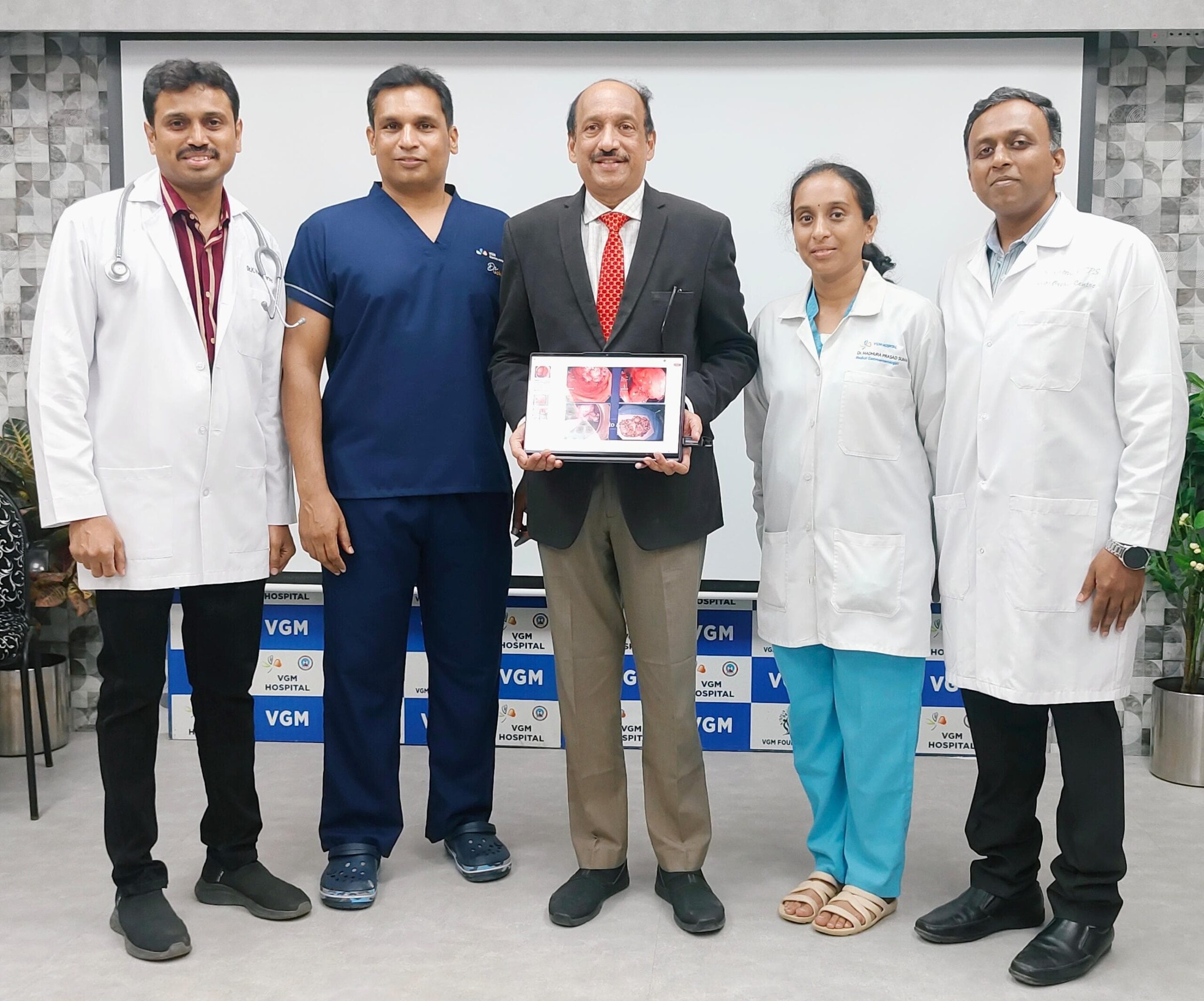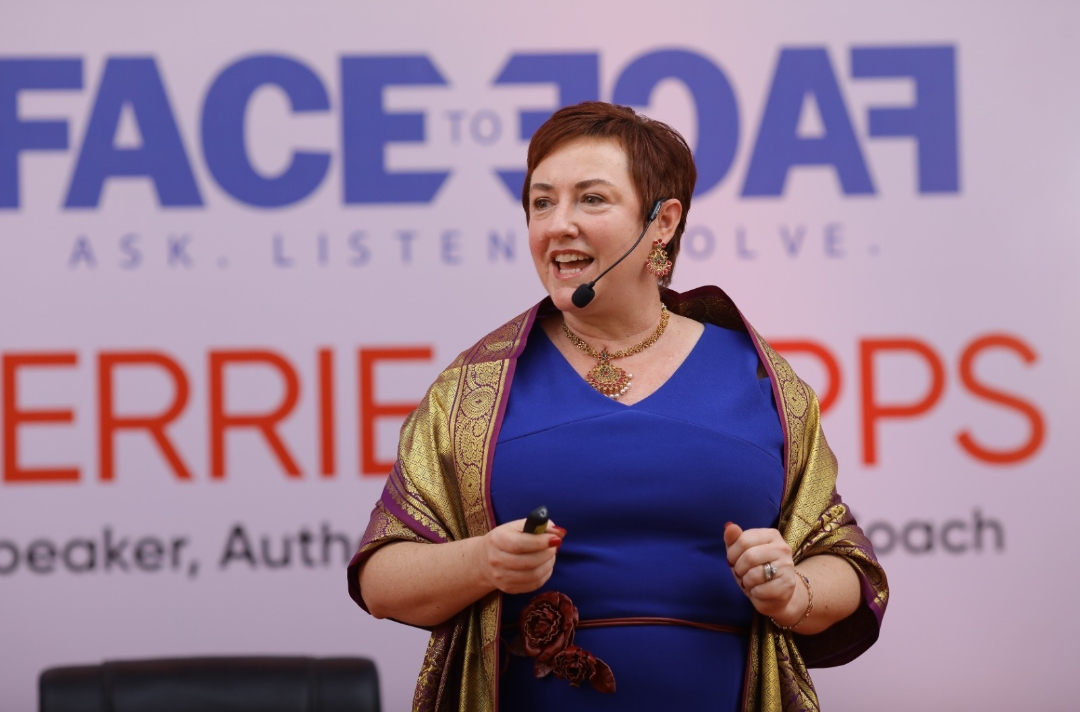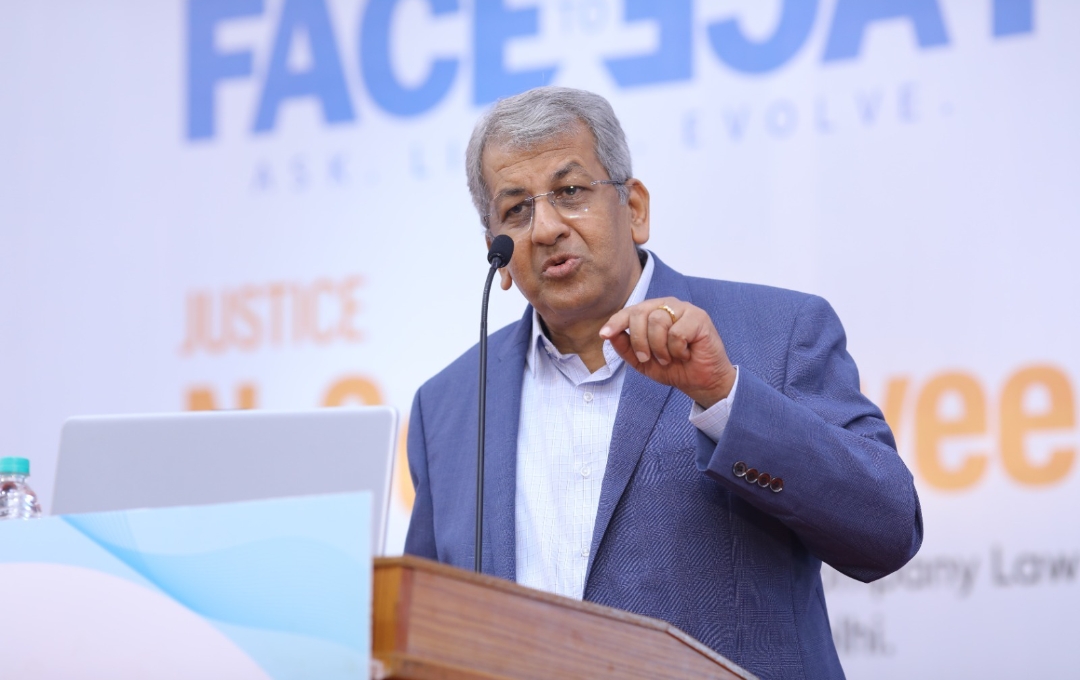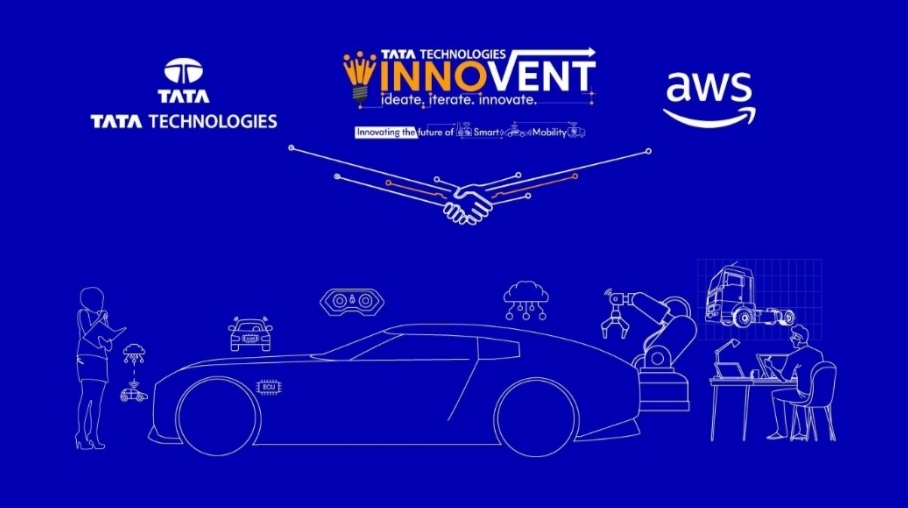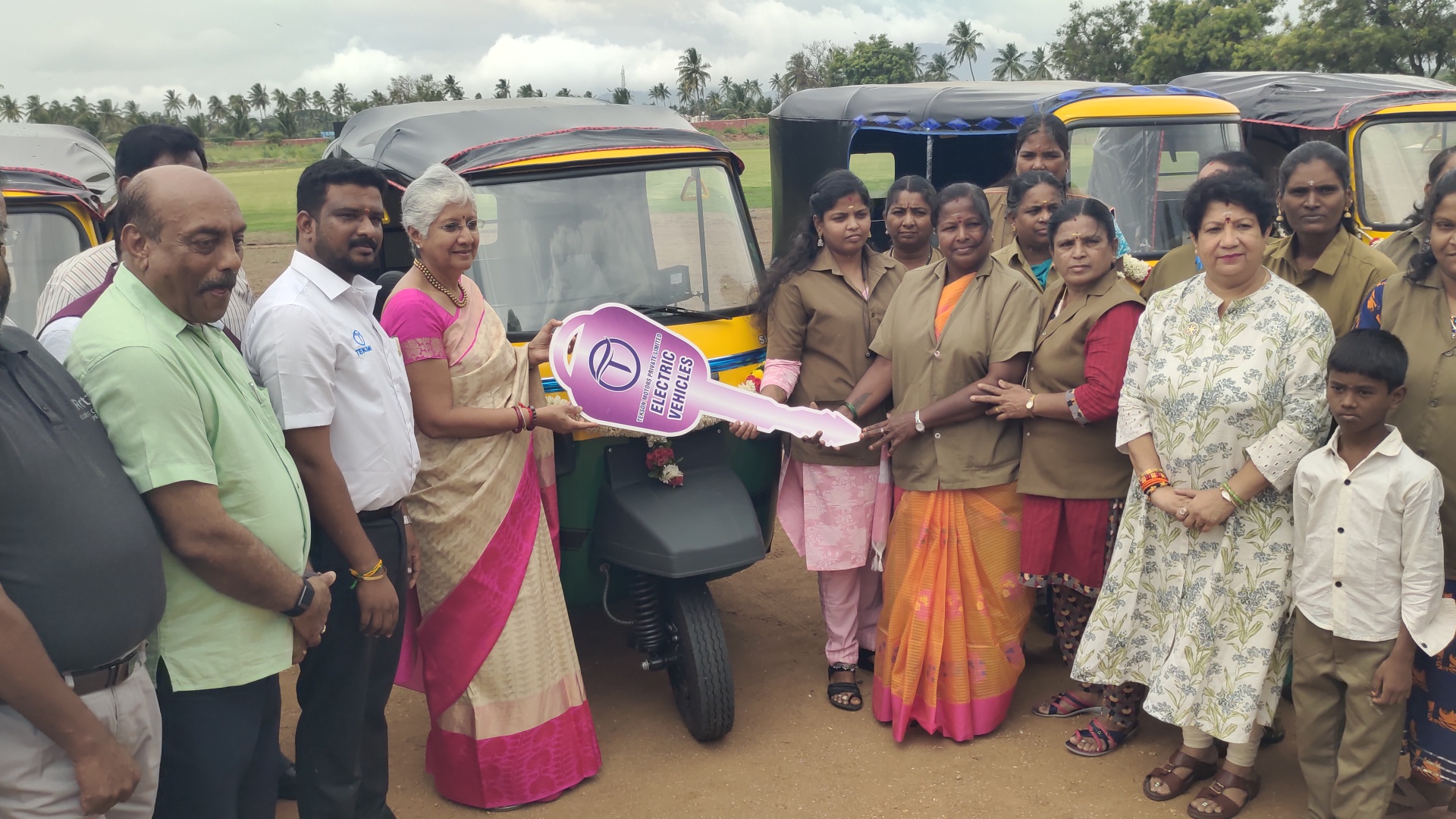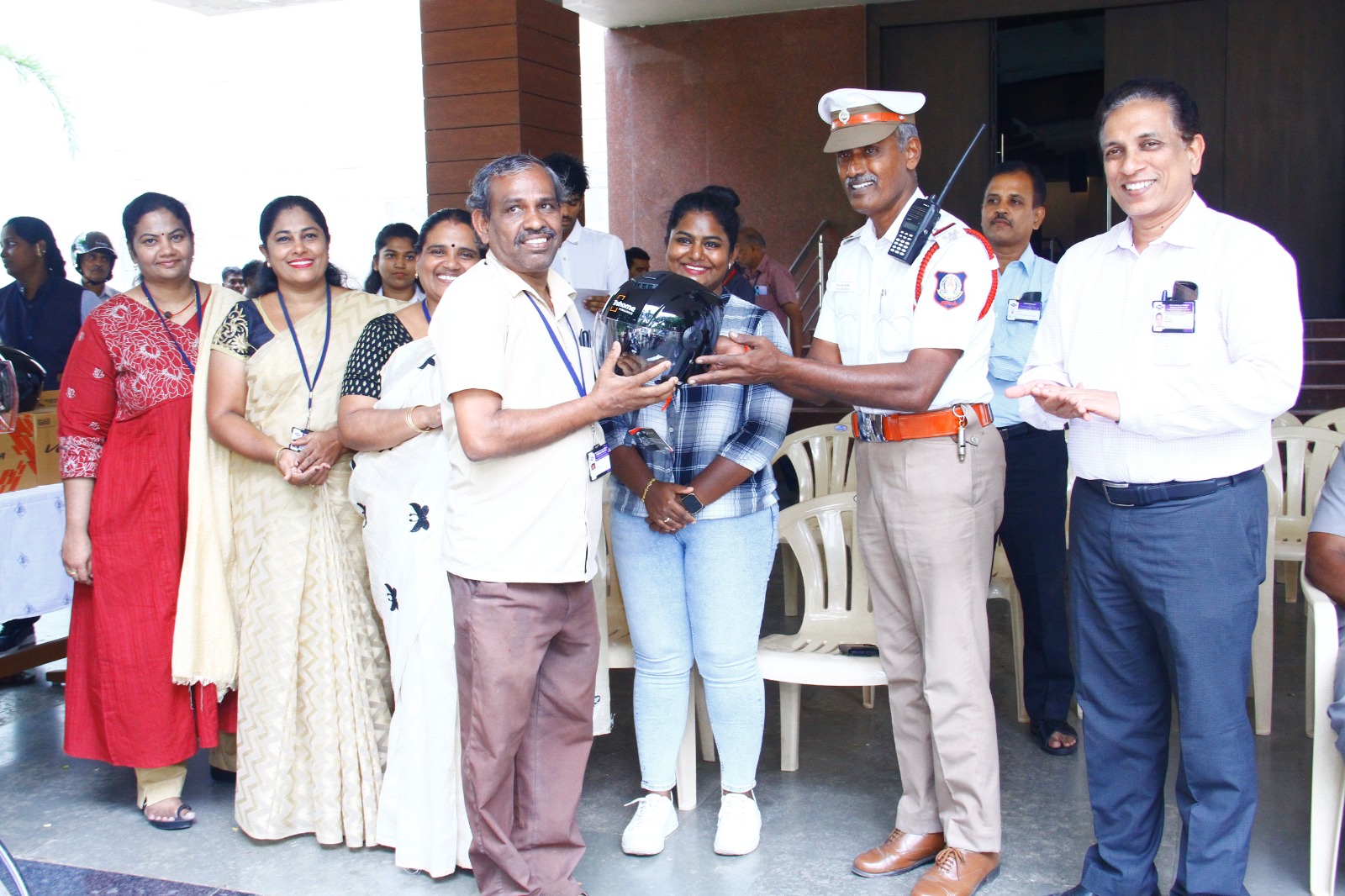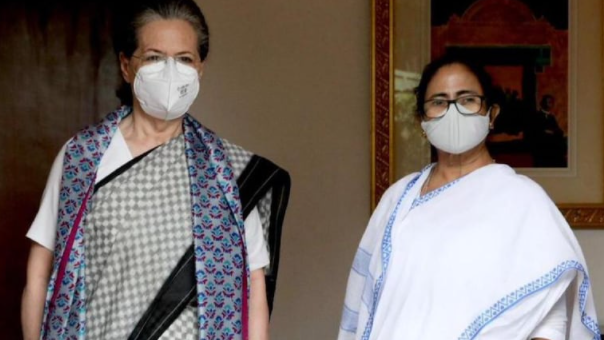Trending Now
- “If Edappadi Palaniswami permits, a thousand young members from the Virudhunagar district AIADMK are prepared to take up arms and engage in battle under my command.” – Former AIADMK Minister Rajendra Balaji
- “India is ready to deal with any counter-attack by Pakistan” – Wing Commander Vyomika Singh
- Central govt orders extension of CBI Director Praveen Sood’s tenure for another year
Coimbatore
Coimbatore Doctors at VGM Hospital Successfully Remove India’s Largest and World’s Third Largest Bowel Polyp Without Major Surgery
![]() April 8, 2025
April 8, 2025
VGM Hospital proudly announces a groundbreaking achievement in gastrointestinal endoscopy:the successful endoscopic removal of an 8 cm polyp from the transverse colon of a 29-year-old female patient. This procedure averted the need for a right hemicolectomy, underscoring VGM Hospital’s commitment to advanced, minimally invasive treatments.
Colonic polyps are growths on the inner lining of the colon, with prevalence increasing with age. By age 50, approximately 25-30% of individuals may develop polyps. Factors contributing to polyp formation include genetic predisposition, dietary habits, lifestyle choices, and chronic inflammation. While many polyps are benign, certain types have the potential to progress to colorectal cancer (CRC) if left untreated.
Historically, the largest colonic polyp resected endoscopically reported in the world is an 18 cm long pedunculated solitary hamartomatous polyp located in the descending and sigmoid colon. This case involved a 47-year-old man who presented with hypogastric pain and constipation. The polyp was successfully removed using endoscopic full-thickness resection (EFTR) in China. NCBI. The second largest poly was 9.5 cm , removed endoscopically in China.
In this case at Coimbatore, a 29-year-old young female patient was referred to VGM Hospital with complaints of diffuse abdominal pain, diarrhea and vomiting, anemia and a 10 kilo weight loss in past 1 month.CT Scan of abdomen revealed an 8 cm by 5.2 cm polyp in the transverse colon. Traditionally, such a sizable lesion would necessitate a right hemicolectomy.
However, the skilled endoscopy team headed by Dr.Vamsi Murthy , gastroenterologist and skilled endoscopist at VGM Hospital employed advanced endoscopic techniques for 3 hours to successfully remove the polyp entirely, preserving the patient’s colon and significantly reducing recovery time.
He was supported by Dr.Madhura Prasad Suman and Dr VG Mohan Prasad .This case demonstrates that endoscopic techniques can be effectively employed to resect very large colonic polyps, obviating the need for more invasive surgical interventions.
Post-procedure, the patient experienced minimal discomfort and was discharged shortly thereafter.Histopathological examination confirmed the polyp was an adenoma with no malignant transformation, eliminating the need for further oncological treatment. This case exemplifies VGM Hospital’s dedication to patient-centered care, utilizing cutting-edge technology to achieve optimal outcomes.
VGM Hospital shared that those who are at the age of 50 or above (some guidelines now suggest starting at 45); those with no family history of CRC or genetic syndromes and no inflammatory bowel disease, should be screened for Colonic Polyps in India.
Similarly, people who have first-degree relative with CRC or advanced adenoma before age 60 should undergo colonoscopy starting at age 40, or 10 years before the age at diagnosis of the relative (whichever is earlier), and every 5 years thereafter.
In case if a person has Personal History of Polyps or Cancer, he or she requires surveillance colonoscopy at intervals depending on the number, size, and histology of previous polyps.Like wise, patients with Inflammatory Bowel Disease (IBD), Genetic Syndromes should exercise caution.
People who consume high red meat, take low fiber diet, drink liquor heavily, have smoking habit, follow a sedentary life and suffer obesity may benefit from earlier or more frequent screening.
Talking about the Indian scenario, the hospital underlined that the burden of CRC is increasing in India, particularly in urban areas. Many cases are diagnosed at a later stage due to lack of screening. Public awareness is low, and cost/logistics may be barriers to colonoscopy-based screening. It suggested that FIT or stool DNA testing could be more practical for mass screening.





